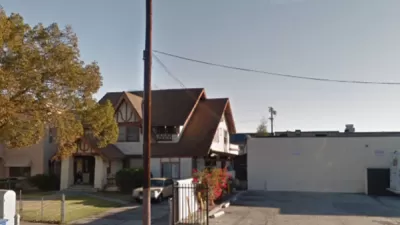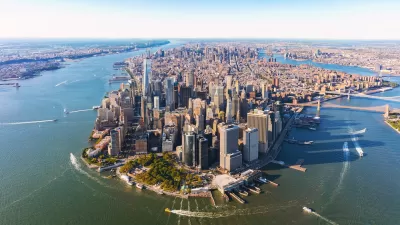Using new analysis of recent US Census data, Richard Florida demonstrates that “[c]ities and regions where density is more concentrated near their urban cores — appear to gain the biggest economic advantage.” That, and a tad more happiness.

You likely won't be surprised to read Richard Florida assert that, “[d]ensity — the close clustering of people together in communities — is a big factor in the technological and economic progress of cities and nations." However, in this article, Florida takes this view a step further by looking at how “different types of density are associated with a wide range of regional economic outcomes." Case in point, when crudely measuring density by the sheer number of people and land area, many are surprised to learn that Los Angeles is in fact denser than New York. That said, density is far more concentrated in central Manhattan than in any part of L.A. For Florida, this begs the question, “Do cities with more concentrated density — where people and economic activity are concentrated and spiky near the center — see even better economic performance?”
Using data from the recent U.S. Census, with analysis by colleague Charlotta Mellander of the Martin Prosperity Institute, Florida shows that, “[e]conomic growth and development, according to several key measures, is higher in metros that are not just dense, but where density is more concentrated." Florida asserts that "[t]his is true for productivity, measured as economic output per person, as well as both income and wages.” College grads and creative workers, for example, are more likely found in highly concentrated metro areas, working in knowledge-rich industries from arts and entertainment, to science and technology, to business and management. Findings also show that more highly dense areas also have greater diversity, more bike commuters and less lone drivers.
Finally, housing prices and happiness indicators are also higher in areas where population-weighted density is taken into account. The higher housing prices come from a variety of factors, including higher income and wages, but are also based on innate and imposed restrictions such as the natural geography and city policies including zoning. But with regards to gauging happiness, Florida writes, “happiness levels are modestly associated with density that is more concentrated at the center of the city.”
FULL STORY: Cities With Denser Cores Do Better

Americans May Be Stuck — But Why?
Americans are moving a lot less than they once did, and that is a problem. While Yoni Applebaum, in his highly-publicized article Stuck, gets the reasons badly wrong, it's still important to ask: why are we moving so much less than before?

Using Old Oil and Gas Wells for Green Energy Storage
Penn State researchers have found that repurposing abandoned oil and gas wells for geothermal-assisted compressed-air energy storage can boost efficiency, reduce environmental risks, and support clean energy and job transitions.

Placekeeping: Setting a New Precedent for City Planners
How a preservation-based approach to redevelopment and urban design can prevent displacement and honor legacy communities.

San Francisco’s Muni Ridership Grew in 2024
The system saw its highest ridership since before the Covid-19 pandemic, but faces a severe budget shortage in the coming year.

Colorado Lawmakers Move to Protect BRT Funding
In the face of potential federal funding cuts, CDOT leaders reasserted their commitment to planned bus rapid transit projects.

Safe Streets Funding in Jeopardy
The Trump administration is specifically targeting bike infrastructure and other road safety projects in its funding cuts.
Urban Design for Planners 1: Software Tools
This six-course series explores essential urban design concepts using open source software and equips planners with the tools they need to participate fully in the urban design process.
Planning for Universal Design
Learn the tools for implementing Universal Design in planning regulations.
Heyer Gruel & Associates PA
City of Moreno Valley
Institute for Housing and Urban Development Studies (IHS)
City of Grandview
Harvard GSD Executive Education
Salt Lake City
NYU Wagner Graduate School of Public Service
City of Cambridge, Maryland





























